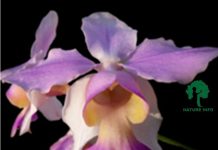Scientific name: Pothos scandens L.
Family: Araceae
Synonym: Pothos cognatus Schott
Bengali/Vernacular name: Batilata, Sunat, Sundad, Hatilata.
Tribal name: Kijing sinapata, Saik paing, Hijing chinepata (Chakma); Soitak, Kansiripata (Marma); Pha-len-zey (Rakhaing); Komorching barsanga (Tanchangya).
Description of the plant: An epiphytic creeping liana, branch cylindric, densely clothed with leaves. Leaves petiolate, broadly winged, obovate-oblong to linear-oblong, many-nerved, lamina ovate to elliptic or lanceolate, base rounded to acute, apex attenuate-mucronate. Inflorescence solitary, small, axillary. Spathe very small, cymbiform margins variously inrolled, purple, base short. Spadix yellow-green or yellow, sub-globose. Flowers oblong-cymbiform, yellow-green to dirty white. Fruit a berry, oblong-ovate, yellow or red.

Plant parts used: Whole plant.
Medicinal uses: Decoction is made with the plants is taken thrice a day (50 ml amount each time) for one month to treat asthma.
Paste prepared from the plant is applied on the affected area for once a day until blister is cured.
Paste is made with the plants is used with lime and mustered oil for making a plaster on the fractured bone and kept for 15 days.
Plant juice is taken thrice a day for three days to treat meningitis.
Decoction made from the plants is used to wash the head once a day until migraine headache is cured.
Pea-sized pills are made with the plant is taken thrice a day (one pill each time) until the vertigo is cured.
Distribution: It is found in greater Sylhet, Chittagong and Chittagong Hill Tracts districts and parts of northern Bangladesh.
Is this plant misidentified? If yes, please tell us….














